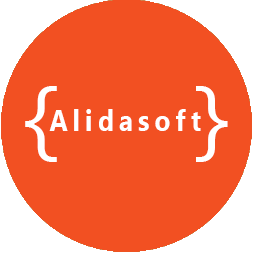Security Engineering on AWS
Safeguarding the AWS Cloud
Introduction
In the ever-evolving landscape of cloud computing, security engineering stands as the vanguard against potential threats and vulnerabilities. This guide is meticulously crafted for prospective AWS cloud computing students, providing a comprehensive exploration of security principles, best practices, and their practical implementation within the AWS ecosystem.
Understanding Security Engineering on AWS
Navigating the AWS Shared Responsibility Model
AWS operates on a Shared Responsibility Model, emphasizing a joint commitment between AWS and its users for a secure cloud environment:
- AWS Responsibilities: Securing the infrastructure and foundational services.
- User Responsibilities: Securing data, access, applications, and network configurations.
Identity and Access Management (IAM)
Fortifying Your Digital Perimeter
IAM is the cornerstone of AWS security, allowing you to manage access and permissions securely:
- Principle of Least Privilege: Assign minimum permissions for necessary actions.
- Multi-Factor Authentication (MFA): Enhance account security with an additional layer of verification.
Securing Your Data with Encryption
Protecting Data at Rest and in Transit
AWS provides various encryption mechanisms to safeguard your data:
- Amazon S3 Encryption: Secure data stored in Amazon S3 with server-side encryption.
- AWS Key Management Service (KMS): Manage cryptographic keys for your applications.
Network Security with Amazon VPC
Creating Isolated and Secure Environments
Amazon Virtual Private Cloud (VPC) empowers you to build a logically isolated section of the AWS Cloud:
- Security Groups and NACLs: Control inbound and outbound traffic to instances.
- VPN and Direct Connect: Establish secure connections to your VPC.
Monitoring and Incident Response with AWS CloudTrail
Keeping a Watchful Eye on Your Environment
AWS CloudTrail provides visibility into user activity, resource changes, and system events:
- Trail Configuration: Capture, store, and analyze API call activity.
- Integration with CloudWatch: Monitor and set alarms for specific events.
Automating Security Best Practices
Strengthening Your Defenses with AWS Config
AWS Config enables you to assess, audit, and evaluate the configurations of your AWS resources:
- Configuration Rules: Define rules for desired configurations and security best practices.
- Automated Remediation: Automatically correct non-compliant resources.
Advanced Threat Detection with AWS GuardDuty
Unveiling Anomalies and Threats
AWS GuardDuty is a managed threat detection service that continuously monitors for malicious activity:
- Intelligent Threat Detection: Identify and prioritize potential security threats.
- Integration with CloudWatch: Streamline response and remediation.
Conclusion
Mastering security engineering on AWS is not just about implementing tools; it’s about adopting a proactive mindset to identify and mitigate risks. From robust identity and access management to encryption and advanced threat detection, this guide has covered key aspects for aspiring security engineers.
Summary
- Shared Responsibility Model: Understanding the joint commitment to security.
- IAM Best Practices: Managing access and permissions securely.
- Encryption Mechanisms: Protecting data at rest and in transit.
- Amazon VPC Security: Creating isolated and secure environments.
- AWS CloudTrail Monitoring: Keeping a vigilant eye on user activity and resource changes.
- Automated Security Best Practices: Strengthening defenses with AWS Config.
- Advanced Threat Detection: Unveiling anomalies and potential threats with AWS GuardDuty.
By embracing the principles, tools, and practices outlined in this guide, you will be well-equipped to safeguard your AWS environment against potential threats, ensuring the integrity and confidentiality of your digital assets.

